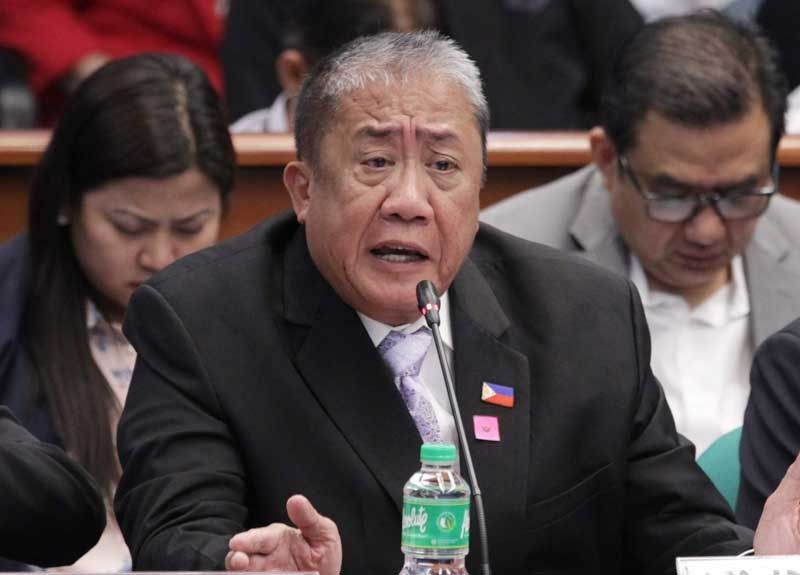YEARENDER 2018: A year of hits and misses for DOTr

MANILA, Philippines — It was a year of hits and misses for the Department of Transportation (DOTr) as far as delivering its promises of bringing change in the lives of Filipino commuters and the general public that use various mode of land, sea and air transport.
Solving the country’s transportation woes is no easy task and as the DOTr puts it, no single solution could address the numerous issues, but instead, it would require a basket of solutions.
The man currently at the helm in undertaking this gargantuan effort, Transportation Secretary Arthur Tugade, has set very high standards for his agency to accomplish. These standards often entail timetables that even the transportation chief himself admits are hard to meet.
“Ako pag nagse-set ng targets yung mahirap. Kaya pag lumagpas ng konti yung target, please don’t say na hindi namin ginagawa yung trabaho namin. Mahirap po ako mag-set ng target, ask the people in our office,” Tugade said.
As a result, the agency has had a number of missed targets in 2018 that range from scheduled project groundbreakings to loan agreement signings and actual start of project operations. However, it also had its fair share of hits.
So if one would ask the agency for an assessment on how it fared last year as far as the pace of the rollout of the Build Build Build projects under its belt, the DOTr would have given itself a pat on the back.
“The DOTr is very much satisfied with the pace of the rollout of the BBB projects in 2018, as numerous projects under the program were finished and inaugurated last year. These include big-ticket projects across our aviation, roads, railways, and maritime sectors,” it said.
Commuters traversing the busy roads of Metro Manila, however, may have a different opinion on the matter based on their daily experience.
Last February, the Japan International Cooperation Agency reported that the worsening traffic situation in Metro Manila is now costing the country P3.5 billion in missed economic opportunities daily, a significant rise from the previous estimate of P2.4 billion in 2014.
The DOTr said it continues to work on a basket of solutions to provide not only safe and comfortable transport, but also improved connectivity and enhanced mobility to Filipinos, not only for the roads sector, but also for railways, aviation, and maritime sectors.
DOTr communications director Goddes Hope Libiran said considered as among the most important DOTr-led undertakings last year is the MRT-3 rehabilitation project, which she said turned out to be the fastest loan processing the Duterte administration has completed by far.
In November, the Philippines and Japan signed the P18-billion loan agreement for the rehabilitation of the MRT-3. The project will run until 2022, and covers the rehabilitation and maintenance of the system’s electromechanical components, power supply, rail tracks, depot equipment, and overhaul of its 72 18-year old light rail vehicles.
“The MRT-3 is integral to the mobility and connectivity of hundreds of thousands of Filipinos shuttling across cities mostly for work and school. Once rehabilitated, the MRT-3 will increase its number of operating train sets from the current 15 to 20 at peak hours, increase train operating speed from 30 kilometers per hour to 60 kilometers per hour, and slash by half the time between trains from the current seven to 10 minutes to up to 3.5 minutes. All these will significantly improve train service and commuter experience on this railway line,” Libiran said.
For the aviation sector, the agency considers the inauguration last year of a new Communications, Navigation, Surveillance/Air Traffic Management (CNS/ATM) system, a state-of-the-art computer and satellite-based air traffic management technology similar to those being used in other countries, as a significant milestone.
The CNS/ATM system brings better air traffic flow and space management, thereby optimizing airport capacity and harnessing efficient use of airspace that will, in turn, minimize flight delays.
A key achievement in the maritime sector last year, the DOTr said, was the reopening in October of the Davao to Manila passenger shipping route. The re-establishment of ferry operations from Davao to Manila and vice versa aims to address the lack of an accessible and affordable passenger shipping route that has been unavailable for almost 10 years.
Aside from embarking on and completing a number of key projects, Libiran said the DOTr has also surmounted several major challenges last year and successfully settled longstanding issues that have beleaguered the agency during the previous administration.
“When the Duterte administration took over, the Ninoy Aquino International Airport (NAIA) was still infamously known as one of the world’s worst airports. Today, NAIA ranks 10th among the most improved airports in the world. Gone, too, are the days of ‘laglag-bala’ modus,” she said.
On the Northrail-Sinomach case, the DOTr said the government was supposed to pay over P5 billion in claims and legal fees, but the matter has already been cleared, as both parties have agreed to waive claims against each other.
“The Duterte administration also inherited a three-million backlog in driver’s licenses, and applicants had to contend then with paper receipts to allow them to drive a vehicle without being apprehended. As of end November, the Land Transportation Office has printed a total of 7,640,323 driver’s license cards with five-year validity and armed with 32 security features designed to end the proliferation of fake licenses,” Libiran said.
But along with the list of achievements also came some mishaps, foremost of which was the controversial Xiamen incident in August where a Chinese passenger aircraft veered off the NAIA runway and affected close to 200,000 passengers due to hundreds of delayed and cancelled flights.
Following the incident, the DOTr has moved to review its current protocols and processes in the airport sector, and at the same time, ensure the modernization of the country’s airports through the DOTr aviation roadmap.
The Xiamen incident, according to Tugade, served as an “eye opener” as it exposed the country’s urgent need to rehabilitate the NAIA and build other international gateways, such as those in Bulacan and Sangley.
Tugade had wanted to complete the Swiss Challenge process for the three unsolicited airport proposals but it seemed not even one would be finished before the year ends.
“Kilala nyo naman ako. Ang gusto ko matapos ito lahat within the year,” Tugade previously said.
The DOTr is still finalizing the concession agreement for the Bulacan International Airport unsolicited proposal of San Miguel Holdings Corp. The proposed airport will have four parallel runways and a passenger terminal building that can accommodate 100 million passengers per year once completed in four to six years.
Talks also continue for the Sangley Airport, with the DOTr agreeing to the proposal submitted by the local government unit of Cavite. It is envisioned that the Sangley Airport will accommodate 70 million passengers annually.
As for the rehabilitation of the NAIA, the Manila International Airport Authority board approved in August the grant of original proponent status to the NAIA Consortium composed of some of the country’s biggest conglomerates, namely Aboitiz InfraCapital Inc., AC Infrastructure Holdings Corp., Alliance Global Group Inc., Asia’s Emerging Dragon Corp., Filinvest Development Corp., JG Summit Holdings Inc. and Metro Pacific Investments Corp.
All these airport projects are aimed at decongesting NAIA, the country’s main international gateway, which at present handles far more passengers than it was built for, having a capacity for 31 million passengers per year but handled 42 million last year.
Moving forward to 2019, the DOTr looks to accomplish more of its ambitious targets that would enable more Filipinos to experience positive change in the aviation, roads, railways, and maritime sectors.
The agency said big-ticket projects to be started this year include the PNR Bicol, LRT Line 1 Railway (Extension), Subic Clark Cargo Railway, and the MRT-3 Rehabilitation project.
Meanwhile, projects to be completed this year include the Davao Sasa Port Phase I (August 2019), Isabela Port in Basilan (November 2019), Malalag Port (May 2019), Road Transport Information Technology Infrastructure Phase I, Construction of Sheltered Port in Brgy. Pag-asa, Kalayaan, and the Maritime Safety Capability Improvement Project Phase I.
“Expect the DOTr to build, build, build in 2019. Our sleeves are all rolled up for projects across the four transportation sectors,” Libiran said.
- Latest
- Trending































